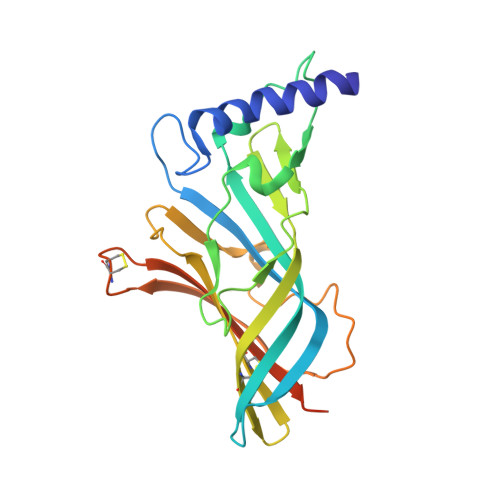Molecular Actions of Smoking Cessation Drugs at Alpha4Beta2 Nicotinic Receptors Defined in Crystal Structures of a Homologous Binding Protein.
Billen, B., Spurny, R., Brams, M., Van Elk, R., Valera-Kummer, S., Yakel, J.L., Voets, T., Bertrand, D., Smit, A.B., Ulens, C.(2012) Proc Natl Acad Sci U S A 109: 9173
- PubMed: 22619328
- DOI: https://doi.org/10.1073/pnas.1116397109
- PubMed Abstract:
Partial agonists of the α4β2 nicotinic acetylcholine receptor (nAChR), such as varenicline, are therapeutically used in smoking cessation treatment. These drugs derive their therapeutic effect from fundamental molecular actions, which are to desensitize α4β2 nAChRs and induce channel opening with higher affinity, but lower efficacy than a full agonist at equal receptor occupancy. Here, we report X-ray crystal structures of a unique acetylcholine binding protein (AChBP) from the annelid Capitella teleta, Ct-AChBP, in complex with varenicline or lobeline, which are both partial agonists. These structures highlight the architecture for molecular recognition of these ligands, indicating the contact residues that potentially mediate their molecular actions in α4β2 nAChRs. We then used structure-guided mutagenesis and electrophysiological recordings to pinpoint crucial interactions of varenicline with residues on the complementary face of the binding site in α4β2 nAChRs. We observe that residues in loops D and E are molecular determinants of desensitization and channel opening with limited efficacy by the partial agonist varenicline. Together, this study analyzes molecular recognition of smoking cessation drugs by nAChRs in a structural context.
Organizational Affiliation:
Laboratory of Structural Neurobiology, KU Leuven, 3000 Leuven, Belgium.

















